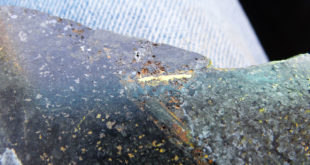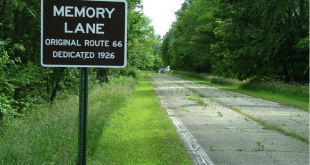Market overview
The silver market is taking off! Two reasons: the New York tragedy and all that it entails, and the placing in “voluntary administration” (September 19th) of Australian company Pasminco Ltd., which is the world’s largest integrated lead and zinc producer, and, according to their website, the world’s third largest silver producer. Pasminco had an after-tax loss of $81 million AUS which was announced on September 12th. The timing couldn’t have been worse. According to MiningWeb.com, lenders “got the wobbles” after the terrorist attacks, and pulled the plug. Silver predominantly is produced as a by-product of base metal mining (lead, zinc and copper) – if the economics aren’t there for lead and zinc, silver credits typically aren’t substantial enough to make operations profitable. As global manufacturing falters, especially automobile manufacture, we can see lessened demand for base metals and falling prices. This will ultimately put the squeeze on silver supplies.
There is too much emotion, and too much spin on Bubblevision to clearly get an idea where stock markets are headed short term. My advice is to ignore the indices and look at the broad market, especially the advance:decline. It may sound a bit harsh, but the NYSE probably closed a few extra days than needed to distance itself in time from the tragedy, and to do some behind-the-scenes plunge protection. Back-up plans for the technical side have been in place since Y2K. An associate of mine who works for a large American bank told me last night that they maintain 3 “disaster sites”, in three different cities, with back-up copies of everything, and he believes that this is standard practice. Of course, no one can replace the lives lost, and this should not be made light of. I wonder about the derivatives market and the impact of the loss of financial expertise – it would seem that of all markets, this has to be massaged on an almost second-by-second basis. Will the loss of this expertise be equivalent to the rogue trader activities of Nick Leeson, who brought down Barings Bank in 1995? In it’s conclusion to their investigation of Barings, the Bank of England said that “failure of controls and managerial confusion” was ultimately responsible. Time will tell what far reaching effects the terrorist attacks will have. It is rather disingenuous for the media to compare the market effects of the tragedy with Pearl Harbor, the assassination of President Kennedy and other epochal events, or underplay the point fall when the market reopened, since it opened immediately after a half percent Fed rate cut and trading curbs (which didn’t exist during previous tragedies) were in the entire day. The Fed cut was designed to buoy up the market and like previous cuts, clearly didn’t work. Probably the best commentary is that of The Economist (Sept. 15th): “If America and the world now suffer a recession it seems sure to be blamed on the terrorists. Economists may even use this to explain why their earlier forecasts were wrong. Yet the truth is that the world was probably heading for recession anyway ”.
The knock-on effect of the attacks is incredible. In the airline industry, the day after the terrorist strikes, already fragile U.S. carrier Midway Airlines, and Australian domestic carrier Ansett, went under. These were already in trouble because of decreased business travel and a lack of discretionary income for holiday spending. A presumed decline in future aircraft orders, as revenues of carriers is impacted, has put pressure on the share prices of American aircraft manufacturer Boeing, Brazilian manufacturer Embraer and Canadian manufacturer Bombardier among others. Boeing announced cuts of up to 30,000 jobs, September 18th. All their suppliers get impacted; the list goes on and on and the effect is worldwide. The tragedy appears to have firmly shut the wallets of the American consumer, who prior to September 11th was meant to ride to the rescue of the equity markets by spending their tax rebates. This will serve to hasten and augment the decline. “Liquidity injection” is inflating of the money supply – access to cheap money is at the heart of the economy’s problems. The call for a “patriotic rally” by the American government wouldn’t have influenced foreign investors to buy, nor keep their money in the market. Increased government spending and bailouts will put further pressure on the dollar.
Michelle Caruso-Cabrera today said on CNBC that precious metals were the day’s second best performers (mid-afternoon, Sept. 19th with the DOW 280 down) but with the caveat that if you invested 5 years ago you were 58% down. Draw your own conclusions as to why this afterthought nugget of negativity had to be delivered.
This Week’s Topic: Cleaning up Reporting Standards
It may seem almost trivial to consider the minutiae of the mining business, but life goes on, and with a potential new plateau level for the gold price, and potential sustained higher byproduct silver prices, economics become more attractive.
I have been particularly anxious to bring people up to speed with new reporting standards that were introduced this year in Canada. This may seem as pretty dry-as-dust stuff, but it is extremely important. The Canadians formed a Mining Standards Task Force back in 1998, and after considerable debate this is the result, which is designed to inject confidence back into the markets. In other words, to prevent things like Bre-X from happening again. The new standards, “National Instrument 43-101 – Standards of Disclosure for Mineral Projects” were introduced February 1, 2001. It’s not just a guideline – it’s the Law. The document is 17 pages long, but here’s the meat of it:
A publicly listed Canadian company must now file a technical report with the appropriate provincial Securities Commission if they are getting a new listing, filing a prospectus, issuing an information or proxy circular, an offering memorandum, a rights offering circular, an annual report if containing previously unreported info, a valuation, a directors’ circular that discloses a preliminary assessment, mineral resources or mineral reserves that constitute a material change, a takeover bid circular, or any other written disclosure that constitutes “a material change in the respect of the affairs of the issuer” (the latter is open to interpretation). Certainly covered would be such things as diamond drilling results or any new numbercrunching that calculates “reserves” or “resources”. This means an end to putting results on the newswires without having a technical document to back them up. No more off-the-cuff statements of “120 million ounces of gold”. Mineral target potential has to be disclosed with appropriate cautionary language. Ditto, if discussing old reserve numbers. This means that someone can’t simply resurrect a project using unsubstantiated numbers from old press releases. Actually, old information can be a bugbear for the new rules. Often newspapers, wire services and analysts will dip into archives for their articles and this old information sometimes can’t be verified by the company under the new rules. The dissemination of old info is only prohibited for the company; the analysts etc. are not liable for it.
There’s a code to follow with regard to reporting mineral resources and reserves. Now companies must use the Standard Definitions adopted by the Canadian Institute of Mining Council, August 20, 2000. Under these definitions, Mineral Resources are subdivided in order of increasing geological confidence, into Inferred, Indicated and Measured categories. A Mineral Reserve is the economically mineable part of a Measured or Indicated Mineral Resource demonstrated by at least a Preliminary Feasibility Study. Go for companies that use an ISO (International Standards Organization) accredited laboratory. I will go into these definitions in greater depth at some other time.
The person who puts the report together has to be a legally defined “Qualified Person” (QP) who remains on the hook for the accuracy and truthfulness of the report. They must be an engineer or geoscientist with at least 5 years experience in minerals exploration, mine development or operation, or mineral project assessment; have specific experience relevant to the subject matter of the report, and be a member in good standing of a professional association – either domestic or recognized by the Canadian Securities Administrators. Professional associations typically check the academic credentials and work histories of their members on application, and have the authority to boot members out for substantiated complaints and infractions.
At least one of the QPs involved in writing the report has to visit the property, take check samples, and has to state what dates the property was visited. No more vicarious reporting. They also have to sign, date and seal their reports and provide a statement of qualifications. In addition, the QP has to be at arm’s length and can’t be a director, officer or employee of the company; nor can they be an insider or affiliate. They can’t own any securities of the company, insider or affiliate (importantly, this doesn’t cover options). They can’t have an interest in the mineral property discussed, or any property within a 2 kilometre radius, and they can’t be consider independent if the majority of their income for three years has come from the insider, company or affiliate.
What this all means is that the independent consulting companies are doing a brisk trade. The new rules haven’t been a big problem for most of the juniors, which typically don’t maintain their own staffs anyway. Those junior companies who already have a staff must hire an outsider who may come in and act as a technical auditor. By the way, it’s a good sign if a company has a QP on staff; it shows a degree of professionalism.
How does this all translate in terms of disclosure to investors and the market? – if a technical report is distilled down into a press release written by a director, an officer, an employee, or an investor relations firm? The law says front and centre that it “applies to all oral statements and written disclosure of scientific and technical information,” so companies that move their stock with positive assay results must have a technical report in hand. NI 43-101 does not impose liability for corporate disclosure on QPs, and makes it clear that responsibility for such disclosure rests with the corporation, its officers and directors. There’s already lots of company law governing the timeliness, thoroughness and accuracy of material data and information disclosed orally, or in written form (press releases, on the Internet, or in Annual and Quarterly reports). It is the responsibility of promoters, brokers and analysts for disseminating the information in an understandable, complete, accurate, true and nonmisleading way – but these guys can sometimes stretch the truth, and they’re really hard to police, so check the facts! The goal of the Canadian Securities Administrators is that if there is a report on file, no-nos like selective reporting of only the good assays will come to an end – but practically speaking – the cocktail hyperbole probably won’t. You can check filings and releases by Canadian issuers by looking them up on http://www.sedar.com. This includes all annual and quarterly reports. Copies of filed technical reports are available from the appropriate Securities Commission. I urge anyone interested to read NI 43-101 for themselves, or get it explained to them by their legal representative. A copy can be downloaded from http://www.bcsc.bc.ca/Publications/mineral_projects.pdf
What’s the story for companies domiciled elsewhere? I don’t have the full picture, so I suggest you consult your broker or investment advisor for information. For the Aussies and Kiwis who receive this letter, congratulations, Australian companies were the first to adopt standards, and theirs are considered to be the most rigorous. The Australian Code for Reporting of Identified Mineral Resources and Ore Reserves was established by the Joint Ore Reserves Committee (JORC) and was incorporated into Australian Stock Exchange listing rules on July 1, 2000. There’s also the VALMIN Code – Code and Guidelines for Technical Assessment and/or Valuation of Minerals and Petroleum Assets and Mineral and Petroleum Securities for Independent Expert Reports which applies to all relevant reports under Australian Corporations Law, including submissions to the Australian Stock Exchange and the Securities and Investments Commission. VALMIN has been around since 1998. All members of the Australian Institute of Mining and Metallurgy (AusIMM) are required to follow the VALMIN Code or face sanctions.
Other companies may follow the IMM classification system of definitions for mineral resources and mineral reserves. This is the system developed in the United Kingdom by the Institution of Mining and Metallurgy. In South Africa, the South African Institution of Mining and Metallurgy has best practice standards.
I have come across many investors who are only comfortable investing in U.S.-based companies with homegrown projects, believing these are secure from fraudulent practices. The truth is quite different. In the United States, there is a code developed by the USGS and published in United States Geological Survey Circular 831 (USA Code) [see http://imcg.wr.usgs.gov/usbmak/c831.html]. Additionally, in 1999 the Society of Mining, Metallurgy and Exploration (SME) [see http://www.swenet.org/digital_library for a copy] released its guidelines for definitions to be used in reporting of mineral resources, reserves, and exploration information. To date, the U.S. Securities and Exchange Commission has not adopted either of these guidelines as policy and there is no legal compulsion to follow them. Reporting for mining companies is governed by Securities Act Industry Guide 7, which dates back to 1981. This can be found at http://www.sec/gov/divisions/corpfin/forms/industry.htm A cursory reading of this document shows that it is incredibly lax and free to all manners of interpretation. As an example, look at the following:
Proven (Measured) Reserves. Reserves for which (a) quantity is computed from dimensions revealed in outcrops, trenches, workings or drill holes; grade and/or quality are computed from the results of detailed sampling and (b) the sites for inspection, sampling and measurement are spaced so closely and the geologic character is so well defined that size, shape, depth and mineral content of reserves are well-established.
Vague, with lots of wiggle room. It would seem that companies only have to name the geologist or engineer who authored the report if “reserves” have been estimated. Amazingly, there seems to be no requirement that companies in early stage exploration even employ a geologist or engineer. It seems that for exploration, almost anything goes. From a reading of company SEC filings (you can look these up on http://www.sec.gov/edgar.shtml) it would seem that this is indeed the case. This may explain the prevalence and survival of “Desert Dirt Scams” in the OTC market. There are other problems; companies are legally prohibited from saying they have $10 trillion dollars of “mineral” in the ground but under the antiquated rules they also can’t state legitimate non-reserve “inferred resources” because the SEC category doesn’t exist. It is actually illegal for companies to make statements of resources unless a feasibility study has been carried out. This means that companies with preliminary estimates of resources through a “prefeasibility study” or “scoping study” cannot legally disclose them. A positive scoping study is an important hurdle for a company – both technically and for capital raising purposes. To not be able to disclose the outcome is disastrous for junior companies lacking earnings or income from other operations. This is one of the reason many junior companies choose to get their primary listing on a less fussy Canadian exchange, and have a secondary listing on Nasdaq or the NYSE.
Certain individual states may have “Corporate Securities Divisions” that investigate public statements by mining companies, but they typically only act on complaints. One bright spot is the Bureau of Land Management (BLM), which is part of the U.S. Dept. of the Interior, which in 1996 introduced 43 new CFR 3715 regulations to govern the use and occupancy of mining claims and mill sites. These regulations deal with all types of unauthorized uses of mining claims, including safety hazards, environmental contamination and investment fraud. The regulations shift the burden of proof to the claim-holder to show that any planned activity is incidental to mining. When an operator proposes mining or occupancy, he must have some measure of proven or probable reserves before the BLM will allow the construction of a mill or other facilities. The regulations allow for criminal as well as civil penalties. This should prevent Desert Dirt companies from erecting mills and recovery plants on worthless claims, but be warned, in most states there are only one or two BLM employees looking after compliance and they are generally slow to move on red flags. Many American junior exploration companies are doing it right, but caveat emptor!
For The Record: The Stealth Bull
Page 64 of the Wall Street Journal, September 20, 2001 under NYSE HIGHS/LOWS:
New 52 Week Highs – 25
New 52 Week Lows – 539
Under “New Highs” – Agnico-Eagle, Glamis Gold, Goldcorp., Newmont Mining, Placer Dome.
On August 19th in “The Gold Moonshot” I wrote: “Imagine what would happen if the gold market became the only game in town!”
Next week: Salting techniques and how to spot them.
*****
Straight Talk on Mining is provided for information purposes only. Nothing herein is to be construed as a recommendation to buy or to sell any particular security or financial instrument. Nothing herein is to be construed as a recommendation to engage in any particular investment strategy or trading strategy.
The investments discussed herein may be unsuitable for investors depending on their specific investment objectives, financial situation, and risk tolerance. Private investors should obtain the advice of a qualified financial advisor before entering into any transaction.
Straight Talk on Mining is based on information that is generally available to the public. The sources used are believed to be reliable, but because the information and data that they provide are beyond my control, no representation is made that it is complete or accurate.
References to other publications and direct links to external Internet sites are sometimes given. The inclusion of any publication, organization or Internet site herein does not imply any endorsement. Straight Talk on Mining has no control over the content of any Internet site that you may reach through links that are provided, nor can their truth, accuracy, or completeness be vouched for.
Straight Talk on Mining is not a financial services company nor is it affiliated with any financial service company in any jurisdiction.
The author/publisher, Dr. Keith M. Barron, is not a qualified financial advisor and is not acting as such in this publication. The accuracy of any legal term or definitions used herein should be verified with your legal advisor or the appropriate government agency.
 Straight Talk On Mining Insights on mining from economic geologist Dr. Keith Barron.
Straight Talk On Mining Insights on mining from economic geologist Dr. Keith Barron.




